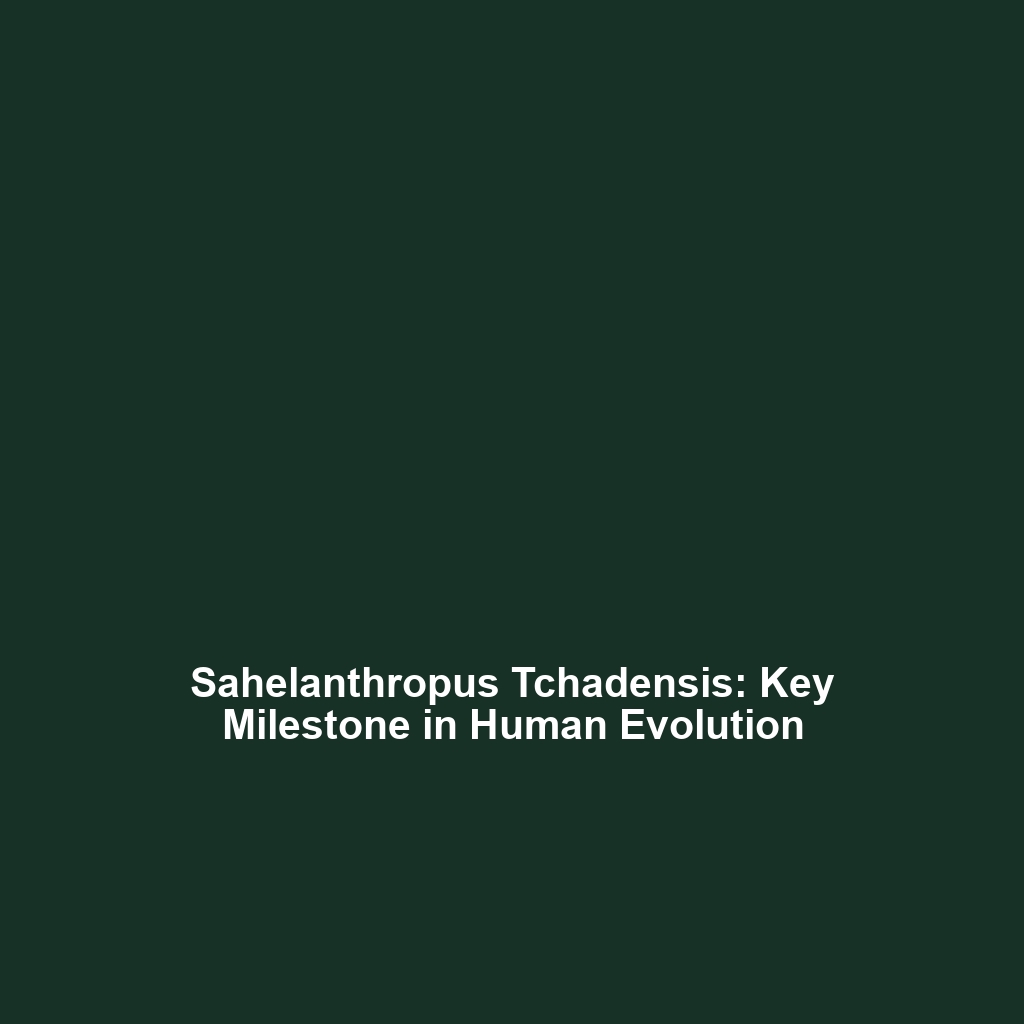Sahelanthropus tchadensis: A Key Figure in Human Evolution
Sahelanthropus tchadensis, one of the oldest known species related to human ancestry, offers pivotal insights into the evolution of early hominins. Discovered in Chad in 2001, this species provides a critical glimpse into the traits shared between modern humans and their ancient ancestors. The significance of Sahelanthropus tchadensis in the larger narrative of human evolution cannot be overstated, as it challenges established timelines and theories on how humans came to be.
Key Concepts of Sahelanthropus tchadensis
Sahelanthropus tchadensis is a vital link in the evolutionary tree, representing early bipedalism and the morphological adaptations that contributed to human evolution. Key concepts include:
- Phylogenetic Significance: As one of the oldest known hominins, its age (approximately 7 million years) places it potentially close to the split between humans and chimpanzees.
- Physical Characteristics: The notable skull features, including a forward-positioned foramen magnum, imply that Sahelanthropus may have walked upright.
- Artifact Context: Fossils found in an area rich in diverse primate species provide important context about the environment in which these early hominins lived.
Applications and Real-World Uses
The study of Sahelanthropus tchadensis extends beyond academic curiosity; it has practical applications in numerous fields:
- How Sahelanthropus tchadensis is used in anthropology: Researchers utilize findings from this species to enhance understanding of human anatomy and behavior.
- Applications in evolutionary biology: Insights gained from studying this species help clarify the evolutionary processes that shaped modern human traits.
Current Challenges in Studying Sahelanthropus tchadensis
Despite its significance, studying Sahelanthropus tchadensis presents various challenges:
- Lack of complete fossils complicates the understanding of its full anatomy.
- Debates within the scientific community regarding its classification and relationship to other hominins.
- Fossil degradation and incomplete records raise questions about the accuracy of existing interpretations.
Future Research and Innovations
Looking ahead, there are exciting prospects for new research related to Sahelanthropus tchadensis. Innovative techniques, such as advanced imaging and genetic analysis, could provide deeper insights:
- Potential breakthroughs in understanding the evolutionary timeline of hominins.
- Utilization of next-gen technologies to re-examine existing fossils for additional data.
- Interdisciplinary research approaches can integrate genomic data with paleoanthropological findings.
Conclusion
Sahelanthropus tchadensis plays a crucial role in understanding human evolution, providing insights into our ancestry, morphology, and the pathways of early hominin development. Its study not only informs scientific debate but also enhances broader societal comprehension of our shared heritage. To delve deeper into human evolutionary studies, consider exploring the related articles in our collection.

